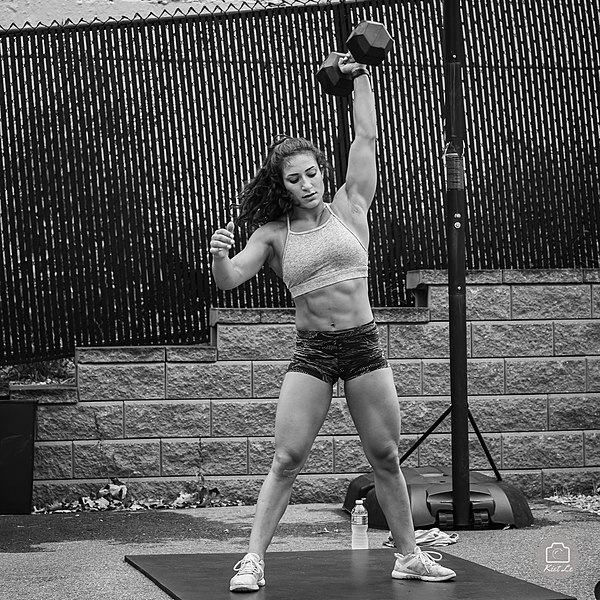Unilateral training involves the performance of physical exercises using one limb instead of two. Such exercises should be considered as being distinct from bilateral, two limbed, exercises. For example, unilateral squats use one leg, and bilateral squats use two legs. A unilateral bench press uses one arm and a bilateral bench press two arms. Depending on the exercise, this may also entail using different equipment i.e. a dumbbell instead of a barbell.
Unilateral exercise is commonly involved in comprehensive training regimes and especially those of professional sports people and athletes. Usually it is used in addition to bilateral training as opposed to instead of it. Unilateral training can yield numerous benefits including improving a person's muscle balance between the left and right sides of their body, improving their sense of balance, and helping to avoid or rehabilitate injury.
A unilateral bicep curl with a dumbbell.
A unilateral overhead press.
Calisthenics or callisthenics (/ˌkælɪsˈθɛnɪk/) is a form of strength training that utilizes an individual's body weight as resistance to perform multi-joint, compound movements with little or no equipment.
School children perform sit-ups, a common type of calisthenic, during a school fitness day.
A squat exercise. After squatting down, the exerciser stands up again while moving their hands back to their sides.
Practicing the wall walk, an exercise for achieving handstands
Plank on medicine balls






